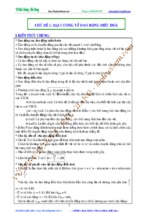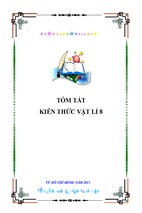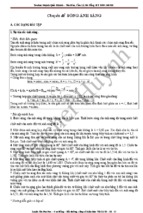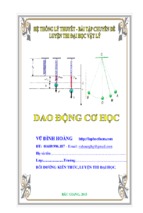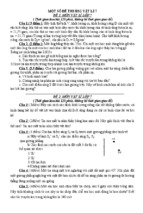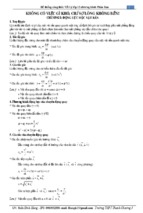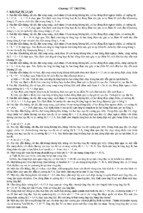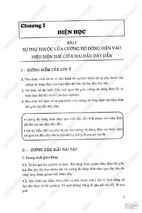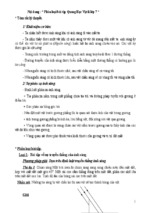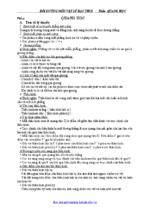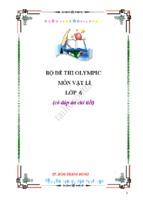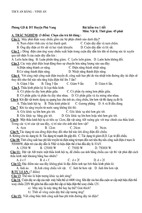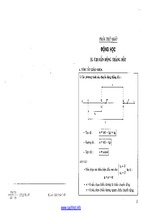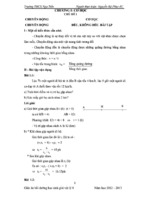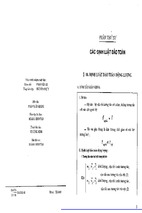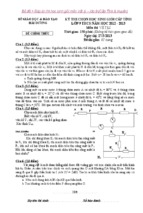Volume 23
Managing Editor
Mahabir Singh
Editor
Anil Ahlawat
(BE, MBA)
No. 11
November 2015
Corporate Office:
Plot 99, Sector 44 Institutional area, Gurgaon -122 003 (HR).
Tel : 0124-4951200 e-mail :
[email protected] website : www.mtg.in
CONTENTS
Regd. Office:
406, Taj Apartment, Near Safdarjung Hospital, New Delhi - 110029.
Physics Musing Problem Set 28
8
JEE Workouts
12
Core Concept
18
Physics Musing Solution Set 27
21
Exam Prep 2016
23
JEE Accelerated Learning Series
Brain Map
31
46
JEE Advanced Practice Paper 2016
58
Ace Your Way CBSE XI
64
Thought Provoking Problems
71
Ace Your Way CBSE XII
74
You Ask We Answer
82
Live Physics
83
Crossword
85
subscribe online at www.mtg.in
individual subscription rates
combined subscription rates
1 yr.
2 yrs.
3 yrs.
1 yr.
2 yrs.
3 yrs.
Mathematics Today
330
600
775
PCM
900
1500
1900
Chemistry Today
330
600
775
PCB
900
1500
1900
Physics For You
330
600
775
PCMB
1000
1800
2300
Biology Today
330
600
775
Send D.D/M.O in favour of MTG Learning Media (P) Ltd.
Payments should be made directly to : MTG Learning Media (P) Ltd,
Plot No. 99, Sector 44, Gurgaon - 122003 (Haryana)
We have not appointed any subscription agent.
Owned, Printed and Published by Mahabir Singh from 406, Taj Apartment, New Delhi - 29 and printed
by Personal Graphics and Advertisers (P) Ltd., Okhla Industrial Area, Phase-II, New Delhi. Readers are
adviced to make appropriate thorough enquiries before acting upon any advertisements published in this
magazine. Focus/Infocus features are marketing incentives. MTG does not vouch or subscribe to the claims
and representations made by advertisers. All disputes are subject to Delhi jurisdiction only.
Editor : Anil Ahlawat
Copyright© MTG Learning Media (P) Ltd.
All rights reserved. Reproduction in any form is prohibited.
Physics for you | November ‘15
7
P
PHYSICS
MUSING
hysics Musing was started in August 2013 issue of Physics For You with the suggestion of Shri Mahabir Singh. The aim of Physics Musing is to augment
the chances of bright students preparing for JEE (Main and Advanced) / AIIMS / Other PMTs with additional study material.
In every issue of Physics For You, 10 challenging problems are proposed in various topics of JEE (Main and Advanced) / various PMTs. The detailed
solutions of these problems will be published in next issue of Physics For You.
The readers who have solved five or more problems may send their detailed solutions with their names and complete address. The names of those who
send atleast five correct solutions will be published in the next issue.
We hope that our readers will enrich their problem solving skills through “Physics Musing” and stand in better stead while facing the competitive exams.
single oPtion correct tyPe
1. A metal ring of initial radius r and cross-sectional
area A is fitted onto a wooden disc of radius R > r. If
Young’s modulus of the metal is Y, then the tension
in the ring is
(a) AYR
(b) Yr
AR
r
(c)
AY (R − r )
r
(d)
Y (R − r )
Ar
2. A piece of pure gold (r = 19.3 g cm–3) is suspected
to be hollow from inside. It weighs 38.250 g in air
and 33.865 g in water. The volume of the hollow
portion in gold is
(a) 1.982 cm3
(b) 2.403 cm3
(c) 3.825 cm3
(d) 4.385 cm3
3. A thermally insulated vessel contains an ideal
gas of molecular mass M and ratio of specific
heats g. It is moving with speed v and is suddenly
brought to rest. Assuming no heat is lost to the
surroundings, its temperature increases by
(a)
( g − 1)
Mv 2
2( g + 2)R
(b)
( g −1)
Mv 2
2 gR
(c)
gMv 2
2R
(d)
( g −1)
Mv 2
2R
4. In the figure shown, there are
10 cells each of emf e and
internal resistance r. The
current through resistance
R is
(a) zero
(b) e/r
(c) 3e/r
(d) 4e/r
8
Physics for you | november ‘15
5. A rectangular loop with a
sliding connector of
length 1 m is situated in a
uniform magnetic field of
2 T perpendicular to the
plane of loop. Resistance
of connector is 2 W.
Two resistances of 6 W and 3 W are connected as
shown in the figure. The external force required to
keep the connector moving with a constant velocity
2 m s–1 is
(a) 2 N
(b) 1 N
(c) 4 N
(d) 6 N
6. A thin lens of refractive
index 1.5 and focal
length in air 20 cm is
placed inside a large
container containing
two immiscible liquids
as shown in figure.
If an object is placed at an infinite distance close to
principal axis, the distance between two images will be
(a) 25 cm
(b) 40 cm
(c) 65 cm
(d) 85 cm
Solution Senders of Physics Musing
1.
2.
3.
4.
set-27
Manmohan Krishna (Bihar)
Anubhav Jana (WB)
Shiekh Md. Shakeel Hassan (Assam)
Swati Shah (Rajasthan)
1.
2.
3.
4.
set-26
Md. Samim Jahin (Assam)
Deep Anand Basumatary (Assam)
Harsimran Singh (Punjab)
Sayantan Bhanja (WB)
7. The figure shows several
equipotential
lines.
Comparing
between
points A and B, choose the
best possible statement.
(a) The electric field has a greater magnitude at
point A and is directed to left.
(b) The electric field has a greater magnitude at
point A and is directed to right.
(c) The electric field has a greater magnitude at
point B and is directed to left.
(d) The electric field has a greater magnitude at
point B and is directed to right.
8. A light wire AB of length
10 cm can slide on a
vertical frame as shown
in figure. There is a film
of soap solution trapped
between the frame and the wire.
Find the mass of the load W that should be
suspended from the wire to keep it in equilibrium.
Neglect friction. Surface tension of soap solution
is 25 dyne cm–1. (Take g = 10 m s–2)
(a) 0.25 g
(b) 0.50 g
(c) 2.50 g
(d) 5.00 g
ParagraPh tyPe
Read the given paragraph and answer question
number 9 and 10.
Consider the situation shown in
figure in which a block A of mass
2 kg is placed over a block B of
mass 4 kg.
The combination of the blocks
are placed on an inclined plane of inclination 37°
with horizontal. The system is released from rest.
(Take g = 10 m s–2 and sin 37° = 0.6)
9. The coefficient of friction between block B and
inclined plane is 0.4 and in between the two blocks
is 0.5. Then
(a) Both blocks will move but block A will slide
over the blocks B.
(b) Both blocks will move together.
(c) None of them will move.
(d) Only block A will move.
10. The frictional force acting between the blocks will
be
(a) 8 N
(b) 6.4 N
(c) 4 N
(d) zero
ATTENTION COACHING INSTITUTES:
nn
CLASSROOM
STUDY MATERIAL
a great offer from MTG
MTG
�
LENT
EXCEL Y �
IT
QUAL
TENT ER
� PAP
TING
� PRIN
� CON
10
offers “Classroom
Study Material” for
J E E ( M a i n & A d va n c e d ) , A I P M T a n d
FOUNDATION MATERIAL for Class 7, 8, 9,
10, 11 & 12 with YOUR BRAND NAME &
COVER DESIGN.
This study material will save you lots of money
spent on teachers, typing, proof-reading and
printing. Also, you will save enormous time.
Normally, a good study material takes 2 years to
develop. But you can have the material printed
with your logo delivered at your doorstep.
Profit from associating with MTG Brand – the
most popular name in educational publishing
for JEE (Main & Advanced)/AIPMT/PMT ....
Order sample chapters on Phone/Fax/e-mail.
Phone : 0124-4951200
09312680856, 09717933372
e-mail :
[email protected] | www.mtg.in
Physics for you | november ‘15
Your logo
here
one or more oPtions correct tyPe questions
1. Assume ABCDEF to be a regular hexagon. Choose
the correct
E
D
statements.
+ DB + BE = 0
(a) ED
F
C
FE
=
(b) BC
= 2FE
(c) AD
A
B
(d) DC = − AF
2. A spring mass system is hanging
from the ceiling of an elevator in
equilibrium as shown in figure. The
elevator suddenly starts accelerating
upwards with acceleration a,
consider all the statements in the
reference frame of elevator and
choose the correct one(s).
(a) The frequency of oscillation is
k
m
1 k
.
2π m
ma
.
k
m ( g + a)
(c) The amplitude of resulting SHM is
.
k
(d) Maximum speed of block during oscillation is
m
k a .
(b) The amplitude of the resulting SHM is
3. An ideal gas has molar heat capacity at constant
pressure CP = 5R . The gas is
2
kept in a cylindrical vessel fitted
with a piston which is free to
move.
Mass of the frictionless piston is
9 kg. Initial volume of the gas is
0.0027 m3 and cross-section area of the piston is
0.09 m2. The initial temperature of the gas is 300 K.
12
Physics for you | NOVember ‘15
class-Xi
Atmospheric pressure P0 = 1.05 × 105 N m–2. An
amount of 2.5 × 104 J of heat energy is supplied to
the gas, then
(a) Initial pressure of the gas is 1.06 × 105 N m–2.
(b) Final temperature of the gas is 1000 K.
(c) Final pressure of the gas is 1.06 × 105 N m–2.
(d) Work done by gas is 9.94 × 103 J.
4. A man has fallen into a ditch of width d and two of
his friends are slowly
pulling him out using a
light rope and two fixed
pulleys as shown in figure.
Assume both the friends
d
apply forces of equal
magnitude. Choose the
correct statements.
(a) The force exerted by both the friends decreases
as the man moves up.
(b) T h e f o r c e ap p l i e d by e a c h f r i e n d i s
mg 2
d + 4h2 when the man is at depth h.
4h
(c) The force exerted by both the friends increases
as the man moves up.
mg 2
d + h2
(d) The force applied by each friend is
h
when the man is at depth h.
5. Two balls are thrown from an inclined plane at angle
of projection a with the plane, one up the incline
and other down the incline as shown in figure.
(Here, T stands for total time of flight).
Which of the following are correct?
v 2 sin2 α
(a) h1 = h2 = 0
2 g cos q
2v0 sin α
(b) T1 = T2 =
g cos q
(c) R2 – R1 = g(sinq) T12
(d) vt = vt
1
2
6. Two identical buggies move one after other due to
inertia (without friction) with the same velocity v0.
A man of mass m rides the rear buggy. At a certain
moment, the man jumps into the front buggy with
a velocity u relative to his buggy. If mass of each
buggy is equal to M and velocity of buggies after
jumping of man are vrear and vfront. Then
m
(a) vrear = v0 +
u
m+M
m
u
(b) vrear = v0 −
m+M
mM
(c) vfront = v0 +
u
(m + M )2
mM
u
(d) vfront = v0 −
(m + M )2
7. A spherical body of radius R rolls on a horizontal
surface with linear velocity v. Let L1 and L2 be the
magnitudes of angular momenta of the body about
centre of mass and point of
contact P respectively.
Then (here K is the radius
of gyration about its
geometrical axis)
(a) L2 = 2L1 if radius of gyration K = R
(b) L2 = 2L1 for all cases
(c) L2 > 2L1 if radius of gyration K < R
(d) L2 > 2L1 if radius of gyration K > R
8. Two solid spheres A and B of equal volumes but of
different densities dA and dB are connected by a
string. They are fully immersed in a
fluid of density dF. They get arranged
A
into an equilibrium state as shown in
the figure with a tension in the string.
B
The arrangement is possible only if
(a) dA < dF
(b) dB > dF
(c) dA > dF
(d) dA + dB = 2dF
9. A body of mass m is attached to a spring of spring
constant k which hangs from the ceiling of an
elevator at rest in equilibrium. Now the elevator
starts accelerating upwards with its acceleration
varying with time as a = pt + q, where p and q are
positive constants. In the frame of elevator,
(a) The block will perform SHM for all value of p
and q.
(b) The block will not perform SHM in general
for all value of p and q except p = 0.
(c) The block will perform SHM provided for all
value of p and q except p = 0.
(d) The velocity of the block will vary simple
harmonically for all value of p and q.
10. A string of mass m is fixed at both its ends. The
fundamental mode of string is excited and it
has an angular frequency w and the maximum
displacement amplitude A. Then
(a) The maximum kinetic energy of the string is
1
EK = mA2 w2 .
4
(b) The maximum kinetic energy of the string is
1
EK = mA2 w2 .
2
(c) The mean kinetic energy of the string averaged
1
over one periodic time is < EK > = mA2 w2 .
4
(d) The mean kinetic energy of the string averaged
1
over one periodic time is < EK > = mA2 w2 .
8
11. A bottle is kept on the ground as shown in the
figure. The bottle can be modelled as having two
cylindrical zones. The lower zone of the bottle has a
cross-sectional radius of
R 2 and is filled with
honey of density 2r. The
upper zone of the bottle is
filled with the water of
density r and has a crosssectional radius R. The
height of the lower zone is
H while that of the upper
zone is 2H. If now the
honey and the water parts
are mixed together to form a homogeneous
solution, then
(Assume that total volume does not change)
(a) The pressure inside the bottle at the base will
remain unaltered.
(b) The normal reaction on the bottle from the
ground will remain unaltered.
(c) The pressure inside the bottle at the base will
1
increase by an amount rgH .
2
(d) The pressure inside the bottle at the base will
1
decrease by an amount rgH .
4
Physics for you | November ‘15
13
12. A particle moving with kinetic energy 3 J makes an
elastic collision (head-on) with a stationary particle
which has twice its mass. During impact
(a) The minimum kinetic energy of system is 1 J
(b) The maximum elastic potential energy of the
system is 2 J.
(c) Momentum and total energy are conserved at
every instant.
(d) The ratio of kinetic energy to potential energy of
the system first decreases and then increases.
13. Two blocks A and B each of mass m are connected
by a massless spring of natural length L and spring
constant k. The blocks are initially resting on a
smooth horizontal floor with the spring at its
natural length as shown in figure. A third identical
block C, moving on the floor with a speed v along
the line joining A and B, collides with A. Then
(a) The maximum compression of the spring is
v m/k .
(b) The maximum compression of the spring is
v m/2k .
(c) The kinetic energy of A-B system at maximum
compression of the spring is zero.
(d) The kinetic energy of A-B system at maximum
compression of the spring is mv2/4.
14. Three planets of same density and with radii R1, R2
and R3 such that R1 = 2R2 = 3R3, have gravitational
fields on the surfaces E1, E2, E3 and escape velocities
v1, v2, v3 respectively. Then
E1
E1 1
=
(a)
(b) E = 3
E2 2
3
v1 1
v1
=
=2
(c)
(d)
v3 3
v2
15. Water is flowing smoothly through a closed pipe
system. At one point A, the speed of the water is
3.0 m s–1 while at another point B, 1.0 m higher, the
speed is 4.0 m s–1. The pressure at A is 20 kPa when
the water is flowing and 18 kPa when the water flow
stops. Then
(a) the pressure at B when water is flowing is
6.7 kPa.
(b) the pressure at B when water is flowing is
8.2 kPa.
(c) the pressure at B when water stops flowing is
10.2 kPa.
(d) the pressure at B when water stops flowing is
8.2 kPa.
14
Physics for you | NOVember ‘15
solutions
1. (a, b,c,
a regular
d):As
ABCDEF
is
hexagon,
\ FE = BC , AD = 2FE , DC = − AF
Also, from triangle
law
addition,
of vector
ED + DB + BE = 0.
2. (a, b, d) : As it is a isochronous system
1 k
\ υ=
2π m
ma
From the reference frame of elevator, A =
k
k ma
m
vmax = wA =
=
a
m k
k
5R
3R
, CV =
2
2
3 2
∆W n(CP − CV )
=
= 1− =
5 5
∆Q
nC p
3. (a, c) : CP =
2∆Q
2 .5
= 2×
× 104 = 104 J
5
5
Pressure is constant and equal to
mg
9 × 10
P = P0 +
= 1.05 × 105 +
A
0.09
= 1.06 × 105 N m–2
T
4. (b, c) : From figure,
h
sin q =
d2
d/2
h2 +
4
mg
As man moves slowly
2T sin q = mg
mg
T=
2sin q
As man moves upward,
q becomes small
\ sin q decreases
⇒ T increases
\ ∆W =
mg
T=
2×h
T
h
2
2
d 2 mg d + 4h
h +
=
4
4h
2
5. (a, b, c) : Maximum height of projectile on an
(v sin a)2
inclined plane, h1 max = 0
= h2 max
2 g cos q
⇒ (a) is correct
Time of flight
2v sin a
T1 = 0
= T2 ⇒ (b) is correct
g cos q
where a = angle of projection from inclined plane
q = angle of inclination of surface.
1
R1 = (v0 cos a)T1 − g sin q T12
2
(Range upward the inclined plane)
1
R2 = (v0 cos a)T2 + g sin q T22
2
(Range downward the inclined plane)
⇒ (R2 – R1) = g sin q T12 ⇒ (c) is correct
vt and vt are the velocities of the particles at their
1
2
maximum height. Let the particles reach their
maximum heights at time t1 and t2 respectively.
Hence, 0 = (v0 sin a) – (g cos q) t1
v sin a
⇒ t1 = 0
g cos q
v sin a
Similarly, t2 = 0
.
g cos q
Hence, t2 = t1
Hence, vt = v0 cos a – (g sin q) t1
1
vt = v0 cos a + (g sin q) t2
2
⇒ vt ≠ vt
1
2
6. (b, c) : As no external force is applied to the system
v0
v
v0
u+v
v0
Conserving linear momentum of man and rear
buggy, (M + m)v0 = Mv + m(v + u)
mu
= vrear
⇒ v = v0 −
M +m
Conserving linear momentum of man and front
buggy, m(u + v) + Mv0 = (M + m)v′
mu
m u + v0 −
+ Mv0 = (M + m)v ′
M + m
Mmu
= ( M + m)v ′
M +m
Mmu
v ′ = v0 +
= vfront
( M + m)2
7. (a, d)
8. (a, b, d) : Let V be the volume of
each sphere and T is the tension in
the string.
For the string to be taut,
dFVg > dAVg or dF > dA
(a) is correct
and dBVg > dFVg or dB > dF
( M + m)v0 +
dFVg
(b) is correct
For an equilibrium
dFVg + dFVg + T = T + dAVg + dBVg
or dA + dB = 2dF
(d) is correct
9. (c, d) : In the frame of elevator
d2x
mg + ma − kx = m
dt 2
2
d x
k
m( g + a)
⇒
= − x −
2
m
k
dt
or
d2x
dt
2
=−
k
m( g + pt + q)
x−
m
k
There is a term involving t on R.H.S., this does not
represent S.H.M. unless p = 0
Differentiating with respect to time
d 2v
k
mp
d3x
k dx mp
=
−
−
or
= − v −
3
2
m dt
k
m
k
dt
dt
Thus the velocity of the block will vary simple
harmonically.
10. (a, d) : Let the displacement of the string be given by
πx
y( x , t ) = A sin cos(wt + d)
L
where d is a phase factor. So the transverse velocity
is given by
πx
∂y
v( x , t ) =
= − wA sin sin(wt + d)
∂y
L
The maximum kinetic energy is equal to the string’s
total energy of oscillation. Note that all points of the
string achieve their maximum kinetic energy at the
same instant of time, where y = 0 for all x. Since
m
dm = mdx where m = is the mass per unit
L
length of the uniform string.
The maximum kinetic energy,
1 ∂y 2
EK = max imum of ∫ dm
2 ∂t
1 L ∂y 2
= maximum of ∫ m dx
2 0 ∂y
2
A
T
dAVg
T
dFVg
B
dBVg
∂y
The maximum value of , occurs when
∂y
2
sin (wt + d) = 1
L
m
πx
Hence EK = A2 w2 ∫ sin2
dx
L
2
0
Physics for you | NOVember ‘15
15
L
πx
The integral ∫ sin
dx over the half-cycle has
L
0
L
the average value of
2
1
mL 1
Hence, EK = A2 w2 = mA2 w2
2 4
2
2
\ (a) is correct
The mean kinetic energy of the string averaged
over one periodic time is obtained by integrating
the time dependent factor sin2 (wt + d) over one
period, 0 to T.
Now since
T
∫ sin
2
(wt + d) dt =
0
T
2
The mean kinetic energy of the string averaged over
one periodic time is
T
E
E
< EK > = K ∫ sin2 (wt + d) dt = K
T
2
0
1 1
1
mA2 w2 = mA2 w2
2 4
8
(d) is correct
=
\
11. (b, c) : Initial pressure at the bottom
= rg × 2H + 2r × g × H = 4rgH
Final density of the homogeneous mixture
r × A × 2H + 2r × 2 A × H 3
=
= r
A × 2H + 2 A × H
2
Final pressure at the bottom =
3
9
r × g × 3H = rgH
2
2
12. (a, b, c, d) : In a head on elastic collision between
two particles, the kinetic energy becomes minimum
and potential energy becomes maximum at the
instant when they move with a common velocity.
The momentum and energy are conserved at every
instant.
Let m and u be the mass and initial velocity of the
first particle, 2m be the mass of second particle and
v be the common velocity.
u
1
Then, mu2 = 3 J ; mu = (m + 2m) v or v =
3
2
Minimum kinetic energy of system
2
1
u
= (3m) = 1 J
2
3
Maximum potential energy of system = 2 J
13. (b, d) : After collision of C with A, let velocity
acquired by A and B be v′ and spring gets compressed
by length x. Using law of conservation of linear
momentum, we have
16
Physics for you | NOVember ‘15
mv = mv′ + mv′
or v′ = v/2
Using law of conservation of mechanical energy, we
have
1 2 1
1
1
mv = mv ′2 + mv ′2 + kx 2
2
2
2
2
2
2
v
v
2
2
or mv = m + m + kx
2
2
mv 2
= kx 2
or
2
1/ 2
m
or x = v \ (b) is correct
2k
At maximum compression of the spring, the kinetic
energy of A-B system will be
2
1
1
mv 2
v
= mv ′2 + mv ′2 = mv 2 = m =
2
2
2
4
\ (d) is correct
4
G πR3r
GM
3
14. (b, c) : E = 2 =
2
R
R
or
E∝R
E1 R1 2R2
=
=
= 2 \ (a) is not correct.
E2 R2
R2
E1 R1 3R3
=
=
= 3 \ (b) is correct.
E3 R3
R3
Escape velocity, v =
2GM
=
R
=
2G 4 3
πR r
R 3
8 2
πR r G or v ∝ R
3
v1 R1
=
= 2 \ (c) is correct.
v2 R2
v1 R1
=
= 3 \ (d) is not correct.
v3 R3
15. (a, d) : Let P1, h1, and v1 and P2, h2 and v2 represent
the pressures, heights and velocities of flow at the
two points respectively. According to the Bernoulli’s
theorem
1
1
P1 + rgh1 + rv12 = P2 + rgh2 + rv22
...(i)
2
2
Putting v1 = 3.0 m s–1, v2 = 4.0 m s–1, (h2 – h1) = 1 m,
P1 = 20 kPa
we get,
10 3
P2 = 20 + 10 3 × 9.8 ( −1) +
[9 − 16] × 10 −3
2
= 20 – 9.8 – 3.5 = 6.7 kPa
Also when the flow stops, v1 = v2 = 0 and then from (i),
P2 = 18 – 9.8 = 8.2 kPa
Physics for you | NOVember ‘15
17
Pressure inside a liquid
We choose atmospheric pressure = P0
At a depth h below the free surface, pressure = P.
P0
h
P
To find P, we choose a liquid
column of height h and crosssectional area A.
Since the liquid column is unaccelerated,
P0A + mg = PA
⇒ P = P0 +
mg
r( Ah)
= P0 +
g
A
A
⇒ P = P0 + rgh
The additional pressure with respect to atmospheric
pressure is known as Gauge pressure.
Hence we conclude that pressure changes by an amount
rgh on moving through a distance h vertically.
Note that this result has been derived from equilibrium
of the liquid column. Hence if the container or liquid
was vertically accelerated, it would not be applicable.
In such cases if the container is vertically accelerated,
say upward with a, then
(Fnet)upward direction = ma
⇒ (PA) – (P0A + mg) = ma
m
⇒ P = P0 + ( g + a)
A
⇒ P = P0 + r(g + a)h
\ We replace g with geff where,
g eff = g + (−a )
\ P = P0 + rgeff h
So, it is interesting to see that we can also have a
situation that all points inside a liquid irrespective of
their location, will have same pressure as atmospheric if
geff = 0, as in case of free fall.
Measurement of atmospheric pressure (P0)
We take a tub filled partially
with mercury and a tube
completely filled with
mercury. We seal the
mouth of the tube and
invert it upside down
with the mouth inside the
mercury in the tub.
The liquid in the tube drops down a little, creating
almost vacuum in the upper closed end of the tube as
shown.
At equilibrium,
PA + rgh = PB = PC = P0
⇒ rgh = P0
[ PA = 0]
Hence, measuring the length of the liquid column in
the tube, P0 can easily be calculated.
Taking P0 = 1 atm ≈ 105 N m–2
For Hg, r = 13.6 g cm–3, h comes out to be almost
760 mm or 76 cm.
Hence you would often see that pressure is given in
terms of length and not N m–2 or pascal. If instead
of Hg, some other liquid is used, to find the height of
liquid risen we can easily use,
r1h1 = r2h2
Supposedly, we keep this set-up in an upward
accelerating frame, then how will h change?
Clearly, in such case also, atmospheric pressure does
not change, we need to change g with geff.
\ P1 = rgh = rg eff h′ = r(g + a)h′
g
\ h′ =
h
g + a
\ h′ < h ⇒ height of liquid column decreases.
Contributed By: Bishwajit Barnwal, Aakash Institute, Kolkata
18
Physics for you | november ‘15
Pressure difference in a horizontally accelerated
container
In such case, clearly, the pressure at same horizontal
level would not be same. To know the exact relation we
consider a thin horizontal liquid column of length l as
drawn. Hence from free body diagram,
a = gsin
n
gsi
g
gcos
lel
ral
pa
e
lin
nc
oi
t
gcos = geff
Since, geff is perpendicular to inclined plane, hence free
surface of liquid is parallel to inclined plane.
Hence a = 0°
U-tubes
(P2A – P1A) = ma
⇒ (P2 – P1)A = (rAl)a
⇒ P2 = P1 + ral
\ DP = ral along horizontal,
as DP = rgh along vertical.
Vertically pressure increases in the direction of gravity,
horizontally acceleration increases opposite to the
direction of acceleration.
Let us calculate the inclination of free surface with
horizontal now.
We can find pressure at B
from A as well as C.
PB = PA + rgh = PC + raL
h a
⇒ tan q = =
L g
This could also have been found out using the fact that
liquids cannot tolerate tangential force on its surface.
Hence the free surface should be perpendicular to g eff
as below.
g eff = g + (−a )
[We revert the acceleration of container and add it
vectorially to g ]
Let us apply this to a more
complicated situation. Assume
a container falling down on a
smooth inclined plane.
We have to find a.
Clearly, a = gsinq downwards
Hence, g eff = g + (−a )
Let us consider a U-tube
filled with two immiscible
liquids on two limbs.
Note that,
PC = PF but
PA ≠ PD
PB ≠ PE,
even though (A, D) and (B, E) pair of points are at same level.
Since if we move up from C to B and F to E, the change
in height is same but we have different density of liquids
hence r1h ≠ r2h.
If difference in height of free surface of liquids is to be
calculated in terms of H,
PC = PF
r2
⇒ P0 + r1gh1 = P0 + r2 gH ⇒ h1 = H
r1
r
\ Dh = 1 − 2 H
r1
Archimedes’ principle
If an object is submerged inside a liquid, partially or
completely, it experiences an upward force by the liquid
due to pressure difference along the vertical column
of the liquid, which is equal to the weight of liquid
displaced by the object. To prove this, let us imagine an
object of cross-sectional area A and height H partially
submerged till height h as shown here.
h
l
s
H
FBD of object
P0A
mg
(P0 + l gh )A
\ By definition, force of upthrust (also known as
buoyant force) is
Fup = (P0 + rl gh)A – P0A
= rl (hA)g = rlVsub g
= weight of displaced liquid
Physics for you | november ‘15
19
Note : This result is applicable only if the container is
vertically unaccelerated, else we need to replace g with
geff in the result.
Now, let us see what would the condition of floatation
for the object be.
For equilibrium,
Fup = mg
⇒ rl(Ah)g = rs(AH)g
h rs
⇒
=
≤ 1 [ h ≤ H for floatation]
H rl
\ If rs ≤ rl, the object floats, else it sinks. Hence it
does not matter how heavy an object is for floating,
what matters is how dense the object is!
h
is
Note here, that the fraction of submerged portion,
H
independent of g, hence even in accelerated containers,
this same fraction will be submerged.
Now, let us seen an application.
Suppose a helium filled balloon
is floating in air (their densities
He air
given as rHe and rair) with a
string tied to a box as shown
here.
Now, if the box is accelerated towards right with
acceleration a, we have to find the direction and angle
with the vertical in which the string gets deflected at
equilibrium.
One would be tempted to say that the string will deflect
towards left due to the pseudo force.
But there is a basic point, one is missing here. As we
saw force of upthrust being generated due to pressure
difference along vertical column of liquid, similar to it
a side thrust can also be generated if pressure difference
is created along horizontal column and on similar
approach it can be proved.
Fside thrust = rl Vsub a
Hence, since, rair > rHe,
so side thrust will be greater
than the pseudo force, so the
balloon deflects towards right.
airVg
HeVa
T
20
(air– He)Vg
airVa
HeVg
(air– He)Va
T
Physics for you | november ‘15
\ tan q =
(rair − rHe )Va a
=
(rair − rHe )Vg g
Force exerted by a liquid on a vertical surface
Let us assume, that the wall of a dam of width w
stops a liquid of height h from flowing. It obviously is
experiencing force due to the liquid’s pressure.
To find this, let us consider a horizontal strip of height
dy at a depth y below the free surface.
The force experienced by this surface due to pressure
of liquid is
dF = (rgy)(dyw)
(P0 is not considered since
it is due to atmosphere)
h
⇒ F = ∫ dF = ∫ wrgydy
0
rgh2w
=
2
\ Net horizontal force on vertical surface
h
= rg (hw )
2
= pressure at centroid of submerged portion ×
area of submerged portion
Force exerted by liquid on a horizontal surface
Let us consider a horizontal face of area A at a depth h
below the free surface.
We have to find the force exerted by the liquid only.
Net vertical force = PA
= (rgh)A = r(Ah)g
= weight of liquid column above its surface
nn
Solution Set-27
1. (d) : Here, d = 0.5 mm = 0.5 × 10–3 m
D = 0.5 m
l = 500 nm = 500 × 10–9 m
The distance of third maxima from the second
minima on the other side is
9
= b (where b is the fringe width)
2
9 lD 9 × 500 × 10−9 × 0.5
=
=
2 d
2 × 0.5 × 10−3
= 2.25 × 10–3 m = 2.25 mm
2. (c) : During motion of the particle, total mechanical
energy remains constant.
At the surface of earth, total mechanical energy is
GmM 1 2
Ei = −
+ mv0
R
2
GM
1 2
= − 2 mR + mv0
2
R
1 2
GM
= − gmR + mv0 g = 2
2
R
Total mechanical energy at height h = R is
GmM 1 2
gmR 1 2
Ef = −
+ mv = −
+ mv
2R
2
2
2
According to law of conservation of mechanical
energy,
Ei = Ef
1 2
gmR 1 2
∴ − gmR + mv0 = −
+ mv
2
2
2
or − 2 gR + v02 = − gR + v 2 ∴ v = v02 − gR
3. (a) : If we consider the cylindrical surface to be a
ring of radius R, there will be an induced emf due
to changing field.
df
dB
E
∫ ⋅ dl = − dt = − A dt
dB
dB
R dB
⇒ E(2 πR) = − A
= − πR2
⇒ E=−
dt
dt
2 dt
∴ Force on the electron
eR dB
F = − Ee =
2 dt
1 eR dB
⇒ Acceleration =
2 m dt
As the field is increasing being directed inside the
paper, hence there will be anticlockwise induced
current (in order to oppose the cause) in the ring
(assumed). Hence there will be a force towards left
on the electron.
4. (c) : Total time of flight is T = 4 s and if u is its
initial speed and q is the angle of projection. Then
2u sinq
T=
=4
g
or usinq = 2g
...(i)
After 1 s velocity vector makes an angle of 45° with
horizontal i.e.,
vx = vy
ucosq = usinq – gt
( t = 1 s)
ucosq = usinq – g
ucosq = 2g – g
(Using (i))
or ucosq = g
...(ii)
Squaring and adding (i) and (ii), we get
u2sin2q + u2cos2q = (2g)2 + (g)2
u2 = 5g2 = 5(10)2 m2 s–2 ∴ u = 22.36 m s–1
Dividing (i) by (ii), we get,
u sin q 2 g
=
=2
u cos q g
tanq = 2 or q = tan–1 (2)
l
5. (d) : Here, T = 2π
...(i)
g
When lift is accelerated upwards with acceleration
T
a, let time period becomes . Then
2
T
l
...(ii)
= 2π
2
g +a
Dividing Eq. (i) by Eq. (ii), we get
1/2
g +a a
= 1 +
g
g
Squaring both sides, we get
a
4 = 1 + or
a = 3g
g
6. (c) : Lengths of the two inclined planes are
h
h
l1 =
and l2 =
sin q1
sin q2
Accelerations of the block down the two planes are
a1 = g sinq1 and a2 = g sinq2
1
1
As l1 = a1t12 and l2 = a2t22
2
2
l1 a1t12
t 22 a1l2 g sin q1 sin q1
∴
=
or 2 =
=
×
l2 a2t22
t1 a2l1 g sin q2 sin q2
t
sin q1
∴ 2=
t1 sin q2
7. (a) : Given : f = at2 + bt
The magnitude of induced emf is
2=
Physics for you | November ‘15
21
a
sin q
2
a
a + cos q
2
a
sin q
tan =
2 (2 + cos q)
a
2 tan
2
tan a =
2a
1 − tan
2
sin q
2⋅
sin q
2 + cos q
=
1 + cos q
sin2 q
1−
(2 + cos q)2
1
On solving, cos q = −
2
∴ q = 120°
df d
= (at 2 + bt ) = 2at + b
dt dt
Current flowing, I = | ε | = 2at + b
R
R
ε=
τ
Average emf =
∫ εdt
0
τ
a
tan =
2
τ
=
∫ (2at + b)dt
0
∫ dt
τ
= aτ + b
0
Total charge flowing,
τ
τ
aτ2 + bτ
(2at + b)
dt =
R
R
0
q = ∫ Idt = ∫
0
T
8. (a) : Free body diagram for m
For m,
a
m
N
mg – T = m 2a … (i)
2a
N = ma
… (ii)
mg
Free body diagram for M
For M
2T – N = Ma
…(iii)
2mg
On solving, a =
( M + 5m)
∴ Net acceleration of m,
2 5mg
am = 4a2 + a2 = 5a =
(5m + M )
B sin q
9. (b) : tan a =
...(i)
A + B cos q
where a is the angle made by the vector ( A + B) with A.
B sin q
Similarly, tan b =
...(ii)
A − B cos q
where b is the angle made by the vector ( A − B) with A.
Note that the angle between A and (− B) is (180° – q).
Adding (i) and (ii), we get
B sin q
B sin q
tan a + tan b =
+
A + B cos q A − B cos q
2
AB sin q − B sin q cos q + AB sin q + B2 sin q cos q
=
( A + B cos q)( A − B cos q)
2 AB sin q
= 2
( A − B2 cos2 q)
10. (a) :
1
4
5
8
10
13
26
S
22
Physics for you | November ‘15
…(i)
D
R
Y
I T
I
C
E
R Y
A
Y
O
N
E M
T
I 27G N A L
28
M A C H I N E
R
T
29
Y
D
M
I
R
R
7
N D F A R M S
C
M
9
12
15
D A T
A
F
Y
D R
T
16
F E S
20
O N
L
22
R S C L E R
C I
O
14
E
E
N W I
N U C L E A R
I
L A
11
3
K
6
E
H
E
2
S
C K
A E
Z
T
F
L
R A
I V
19
18
P O S
P R U
L
N
B sin q
A + B cos q
sin q
tan a =
.
1 + cos q
nn
solution of october 2015 crossword
tan a =
…(ii)
L
Y O C T O
T
I
P
F
L
O P
Y C E L L P
17
W E I G H T
O
F
23
O M E 24T E R
O 25A
S I
21
S
L
U N
K
R E
L Y
F W
M C
I
U A
E Y
C L O U D L
S
R
A H
L O
I
I
N C
E
Winners (October 2015)
Basheer Mazahar (Varanasi)
sidharth sankar sahu (Odisha)
Ayushi Tripathi (Delhi)
solution senders (september 2015)
Anoop Jain (Delhi)
sanchit Mehta (Haryana)
Viraj Thapa (Assam)
chapterwise McQs for practice
Useful for All National and State Level Medical/Engg. Entrance Exams
Mechanical ProPerties of fluids
1. A hemispherical bowl just floats without sinking
in a liquid of density 1.2 × 103 kg m–3. If outer
diameter and the density of the bowl are 1 m and
2 × 104 kg m–3 respectively, then the inner diameter
of the bowl will be
(a) 0.94 m
(b) 0.96 m
(c) 0.98 m
(d) 0.99 m
2. A body of density r is dropped from rest at a height
h into a lake of density s, where s > r. Neglecting
all dissipative forces, calculate the maximum depth
to which the body sinks before returning to float on
the surface.
h
hr
(a) s − r
(b)
s
hr
hs
(c) s − r
(d)
s−r
3. Water in a vessel of uniform cross-section escapes
through a narrow tube at the base of the vessel.
Which of the following graphs represents the
variation of the height h of the liquid with time t?
h
h
(a)
13.6 g cm–3 and the angle of contact of mercury
and water are 135° and 0° respectively, the ratio of
surface tension of water and mercury is
(a) 1 : 0.15
(b) 1 : 3
(c) 1 : 6.5
(d) 1.5 : 1
5. A metallic sphere of mass M falls through glycerine
with a terminal velocity v. If we drop a ball of mass
8M of same metal into a column of glycerine, the
terminal velocity of the ball will be
(a) 2 v
(b) 4 v
(c) 8 v
(d) 16 v
6. A cylindrical drum, open at the top, contains 15 L
of water. It drains out through a small opening at
the bottom. 5 L of water comes out in time t1, the
next 5 L in further time t2 and the last 5 L in further
time t3. Then
(a) t1 < t2 < t3
(b) t1 > t2 > t3
(c) t1 = t2 = t3
(d) t2 > t1 = t3
7. A sealed tank containing a liquid of density r moves
with a horizontal acceleration a, as shown in figure.
The difference in pressure between the points A and
B is
l
(b)
h
t
(c)
h
t
(d)
t
t
4. Water rises to a height of 10 cm in a capillary tube
and mercury falls to a depth of 3.42 cm in the
same capillary tube. If the density of mercury is
h
A
a
B
(a) h r g + l r a
(c) h r g
(b) h r g – l r a
(d) l r a
8. The surface area of air bubble increases four
times when it rises from bottom to top of a water
tank where the temperature is uniform. If the
Physics for you | november ‘15
23
atmospheric pressure is 10 m of water, the depth of
the water in the tank is
(a) 30 m
(b) 40 m
(c) 70 m
(d) 80 m
(c) On the surface of the moon, the height is more
than h.
(d) In a lift moving down with constant acceleration,
height is less than h.
4 th
of its
5
volume submerged, but it just floats in a liquid.
What is the density of liquid?
(a) 750 kg m–3
(b) 800 kg m–3
(c) 1000 kg m–3
(d) 1250 kg m–3
14. A candle of diameter d is floating on a liquid
in a cylindrical container of diameter D(D>>d)
as shown in figure. If it is burning at the rate of
2 cm h–1, then the top of the candle will
9. A block of wood floats in water with
10. A spherical ball is dropped in a long column of
viscous liquid. Which of the following graphs
represent the variation of
(i) gravitational force with time
(ii) viscous force with time
(iii) net force acting on the ball with time?
F
Q
R
(a) Q, R, P
(c) P, Q, R
P
t
(b) R, Q, P
(d) R, P, Q
11. Water is flowing through a horizontal pipe. If at one
point pressure is 2 cm of Hg and velocity of flow of
the liquid is 32 cm s–1 and at another point, velocity
of flow is 40 cm s–1, the pressure at this point is
(a) 1.45 cm of Hg
(b) 1.98 cm of Hg
(c) 1.67 cm of Hg
(d) 1.34 cm of Hg
12. The rate of flow of glycerine of density
1.25 × 103 kg m–3 through the conical section
of a pipe, if the radii of its ends are 0.1 m and
0.04 m and the pressure drop across its length is
10 N m–2, is
(a) 5.28 × 10–4 m3 s–1 (b) 6.28 × 10–4 m3 s–1
(c) 7.28 × 10–4 m3 s–1 (d) 8.28 × 10–4 m3 s–1
13. Water rises in a capillary tube to a height h. Choose
the false statement regarding a capillary rise from
the following.
(a) On the surface of Jupiter, height will be less
than h.
(b) In a lift, moving up with constant acceleration,
height is less than h.
24
Physics for you | november ‘15
L
L
d
D
(a)
(b)
(c)
(d)
remain at the same height
fall at the rate of 1 cm h–1
fall at the rate of 2 cm h–1
go up at the rate of 1 cm h–1
15. A frame made of metallic wire enclosing a surface
area A is covered with a soap film. If the area of the
frame of metallic wire is reduced by 50%, the energy
of the soap film will be changed by
(a) 100% (b) 75% (c) 50% (d) 25%
therMal ProPerties of Matter
16. The plots of intensity versus wavelength for
three black bodies at temperatures T1, T2 and T3
respectively are as shown. Their temperatures are
such that
I
T3
T1
T2
(a) T1 > T2 > T3
(c) T2 > T3 > T1
(b) T1 > T3 > T2
(d) T3 > T2 > T1
17. A solid copper sphere (density r and specific heat
capacity c) of radius r at an initial temperature
200 K is suspended inside a chamber whose walls
are at almost 0 K. The time required (in ms) for the
temperature of the sphere to reach 100 K is
7 r rc
80 r rc
(a)
(b)
80 s
7 s
7 r rc
7 r rc
(c)
(d)
27 s
27 s
18. A clock with an iron pendulum keeps correct time
at 15°C. What will be the error in time per day, if
the room temperature is 20°C?
(The coefficient of linear expansion of iron is
0.000012°C–1.)
(a) 2.6 s
(b) 6.2 s
(c) 1.3 s
(d) 3.1 s
19. A body cools from 60°C to 50°C in
10 min. If room temperature is 25°C,
temperature of body at the end of next
10 min will be
(a) 38.5°C
(b) 40°C
(c) 45°C
(d) 42.8°C
20. Two rods of same length and material transfer a
given amount of heat in 12 s, when they are joined
end to end (i.e., in series). But when they are joined
in parallel, they will transfer same heat under same
conditions in
(a) 24 s
(b) 3 s
(c) 48 s
(d) 1.5 s
21. A spherical black body with a radius of 12 cm
radiates 450 W power at 500 K. If the radius were
halved and the temperature doubled, the power
radiated in watt should be
(a) 450
(b) 900
(c) 225
(d) 1800
22. A body in laboratory takes 4 min to cool from 61°C
to 59°C. If the laboratory temperature is 30°C, then
the time taken by it to cool from 51°C to 49°C is
(a) 4 min
(b) 6 min
(c) 8 min
(d) 5 min
23. The wavelength of maximum intensity of radiation
emitted by a star is 289.8 nm. The radiation intensity
for the star is (Take s = 5.67 × 10–8 W m–2 K–4,
Wien’s constant, b = 2898 mm K)
(a) 5.67 × 108 W m–2 (b) 5.67 × 1012 W m–2
(c) 5.67 × 107 W m–2 (d) 5.67 × 1014 W m–2
24. The reading of Centigrade thermometer coincides
with that of Fahrenheit thermometer in a liquid.
The temperature of the liquid is
(a) –40°C
(b) 0°C
(c) 100°C
(d) 300°C
25. For a black body at temperature 727 °C, its radiating
power is 60 W and temperature of surrounding
is 227°C. If the temperature of the black body is
changed to 1227°C, then its radiating power will be
(a) 120 W
(b) 240 W
(c) 304 W
(d) 320 W
26. A metal plate 4 mm thick has a temperature
difference of 32°C between its faces. It transmits
200 kcal h–1 through an area of 5 cm2. Thermal
conductivity of the material is
(a) 58.33 W m–1 °C–1
(b) 33.58 W m–1 °C–1
(c) 5 × 10–4 W m–1 °C–1
(d) 5 × 10–2 W m–1 °C–1
27. A 2 kg copper block is heated to 500°C and then it
is placed on a large block of ice at 0°C. If the specific
heat capacity of copper is 400 J kg–1°C–1 and latent
heat of fusion of water is 3.5 × 105 J kg–1, the amount
of ice that can melt is
(a) (7/8) kg
(b) (7/5) kg
(c) (8/7) kg
(d) (5/7) kg
28. The maximum wavelength of radiation emitted
at 2000 K is 4 mm. What will be the maximum
wavelength emitted at 2400 K?
(a) 3.3 mm
(b) 0.66 mm
(c) 1 m
(d) 1 mm
29. The net rate at which heat is lost by a body due to
radiation does not depend upon
(a) temperature of the body
(b) temperature of the surroundings
(c) material of the body
(d) nature of its surface
30. We plot a graph, having temperature in °C on x-axis
and in °F on y-axis. If the graph is straight line,
then it
(a) passes through origin
(b) intercepts the positive x-axis
(c) intercepts the positive y-axis
(d) intercepts the negative axis of both x-and
y-axis
solutions
1. (c) : L e t D 1 b e t h e i n n e r d i a m e t e r of t h e
hemispherical bowl. As bowl is just floating so
3
3
3
4 1
D1
3 4 1
p × 1.2 × 10 = p − × (2 × 104 )
3 2
3 2 2
Physics for you | november ‘15
25

